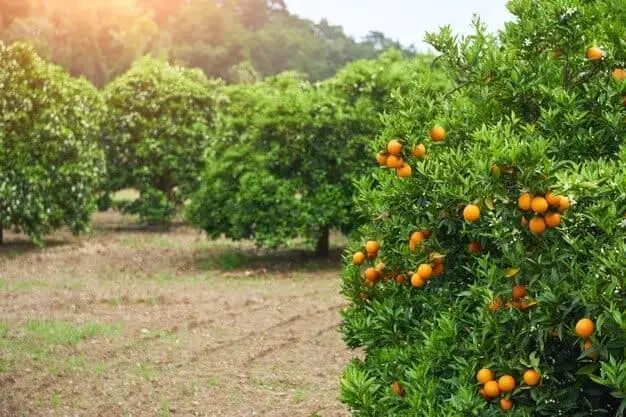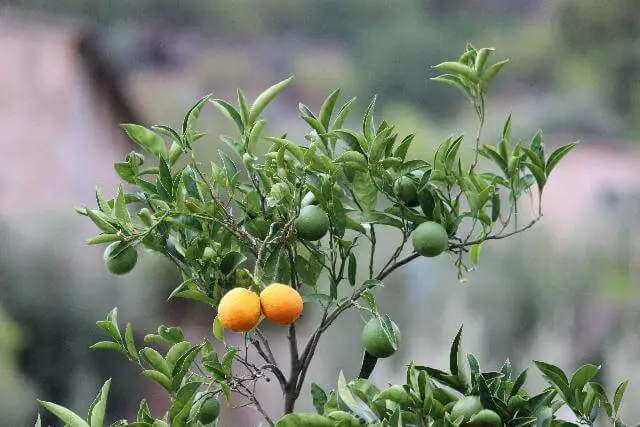Contents
Growing citrus plants in your garden can be extremely easy to do if you know the proper ways to care for them. Knowledge about their growing seasons, USDA hardiness zones, suitable soil type for growth, exposure to sunlight, and frequency of watering are but a few things you should know about them.
More importantly, what to feed your plants and how often you should feed your citrus trees should be basic pieces of information that you must know. Plants require nutrients to survive for without them, they cannot build organic matter.
That’s why in this article, we’ll be looking at the best feeding time for various citrus plants. This way, you can have the maximum fruit yield that you desire at the end of the season.
A Look at the Nutrients Citrus Plants Need to Survive

Like all living things, plants need to feed to survive. While most varieties do not have teeth, they feed to live by using their vast root network to absorb nutrients from the soil. You might be asking yourself, what are these nutrients that my nutrients need to survive? The truth is you’ve probably heard about most of them. You just do not know what function they serve. So let’s break them down for you.
Nitrogen: As a part of the holy trinity of nutrients, the NPK, nitrogen is one of the most essential nutrients your citrus tree needs to feed on. It is a major constituent of chlorophyll as it gives the leaves their green color, They also help build proteins (amino acids) in them.
Phosphorus: As the second member of the holy trinity, phosphorus can be found in every part of the plant as it exists in the plant’s cells. It is responsible for plant growth, the transfer of genetic characteristics, transformation of sugars, energy transfer, and nutrient movement. it helps regulate protein synthesis, protects citrus plants from disease while helping with reproduction through seed and flower production.
Potassium: As the final member, this protects the citrus plant from diseases, encourages chlorophyll production, and it ensures plant growth. It is responsible for transpiration by opening and closing the stomata of the plant. Finally, it helps with the production of adenosine triphosphate (ATP) which regulated the photosynthesis rate.
Iodine: In comparison to those mentioned earlier, iodine is not needed in large quantities. Instead, little doses of it are needed for the optimal growth and development of the citrus plant.
Carbon: While plants produce oxygen for us to live, they depend on the carbon we produce to survive. It is required during photosynthesis for the growth of plants as it is converted to energy.
Sulfur: This micronutrient aids photosynthesis, nodule development, and nitrogen fixation. It is one of the nutrients that is responsible for the formation of enzymes, chlorophyll, vitamins, and proteins in plants.
Calcium: This is largely responsible for holding the cell walls of plants together. It ensures the growth and development of plants while producing plant tissues and activating enzymes.
Iron: This micronutrient is vital for DNA synthesis, photosynthesis, and respiration in plants.
Magnesium: This acts as a phosphate carrier in plants. It also ensures that the plant’s leaves absorb enough sunlight during photosynthesis.
Zinc: Zinc synthesizes protein, activates enzymes, and most importantly, it helps plants withstand cold temperatures. Remember that citrus plants love warm weather.
Copper: This aids plant metabolism, transpiration, and the activation of certain enzymes in plants.
Now that you’ve read the rundown of the macro- and micro-nutrients citrus plants feed on, here’s how to coordinate their feeding times.
Good to Read : How to Grow Citrus Fruits?
Best Feeding Time for Citrus Plants

Several factors influence how often you should fertilize your citrus plant. They include:
Its Growth Season: During summer and spring, citrus plants experience active growth and would need to be fertilized once every two months. During fall and winter, however, the plants are dormant and would require fertilization less often.
Its Maturity Level: For young citrus plants including young oranges, limes, lemon, and grapefruit trees, it needs to be fertilized about once every two months during periods of active growth. However, during periods of dormancy, once every three months will suffice.
For much older trees, you can get away with not fertilizing them during their dormant period. You should counter by fertilizing more often in the active growth stage. By this, I mean fertilizing once every month.
Its Appearance: Obviously, a lush citrus plant tells you that it’s well fed and that it’s growing healthy. This tells you that it doesn’t need to be fertilized as it already has all that it needs. A non-healthy looking citrus plant with yellowing leaves tells you that it has a deficiency of some nutrients. Hence, you should apply fertilizer.
Its Flowering Period: During those times when flowers bloom and form fruit, they need the most amount of nutrients possible. Liken it to a pregnant woman and her cravings. The same goes for fruit-forming citrus trees. Nutrient deficiencies will greatly affect the yield of the tree’s fruit formation.
How to Fertilize a Citrus Tree
To fertilize a citrus tree, using a specially formulated citrus tree fertilizer is recommended because they are rich in the macronutrients nitrogen (N), phosphorus (P), and potassium (K). They also contain varying amounts of micronutrients such as manganese, magnesium, iodine, boron, iron, and copper to name a few. The composition depends on the manufacturer.
Also, these fertilizers can be applied in one of two ways. That is, either through a ground application or leaf application. To apply, simply follow the instructions prescribed by the manufacturer.
Usually, those applied to the ground are usually granular while those that are directly sprayed on leaves are water-soluble. Both have their advantages. Granular fertilizers are absorbed slowly over a longer period while water-soluble fertilizers are absorbed rather quickly for a much shorter period.
If you’re looking for a quick rejuvenation for your citrus plants through the use of water-soluble fertilizers, then Miracle-Gro’s Continuous Release Plant Food is what you need. For a slow and steady enrichment, on the other hand, Miracle-Gro’s fertilizer spikes will be a highly effective recommendation.
Simply put, knowledge of the best feeding times for your plant ensures that it grows and develops well. It also gives you the reassurance that the citrus plants in your garden will grow lush and yield a bountiful harvest.
Want to know more about gardening ?
Fill in your email address in the form below and you'll receive all the latest updates directly in your in-box.
Thank you for subscribing.
Something went wrong.